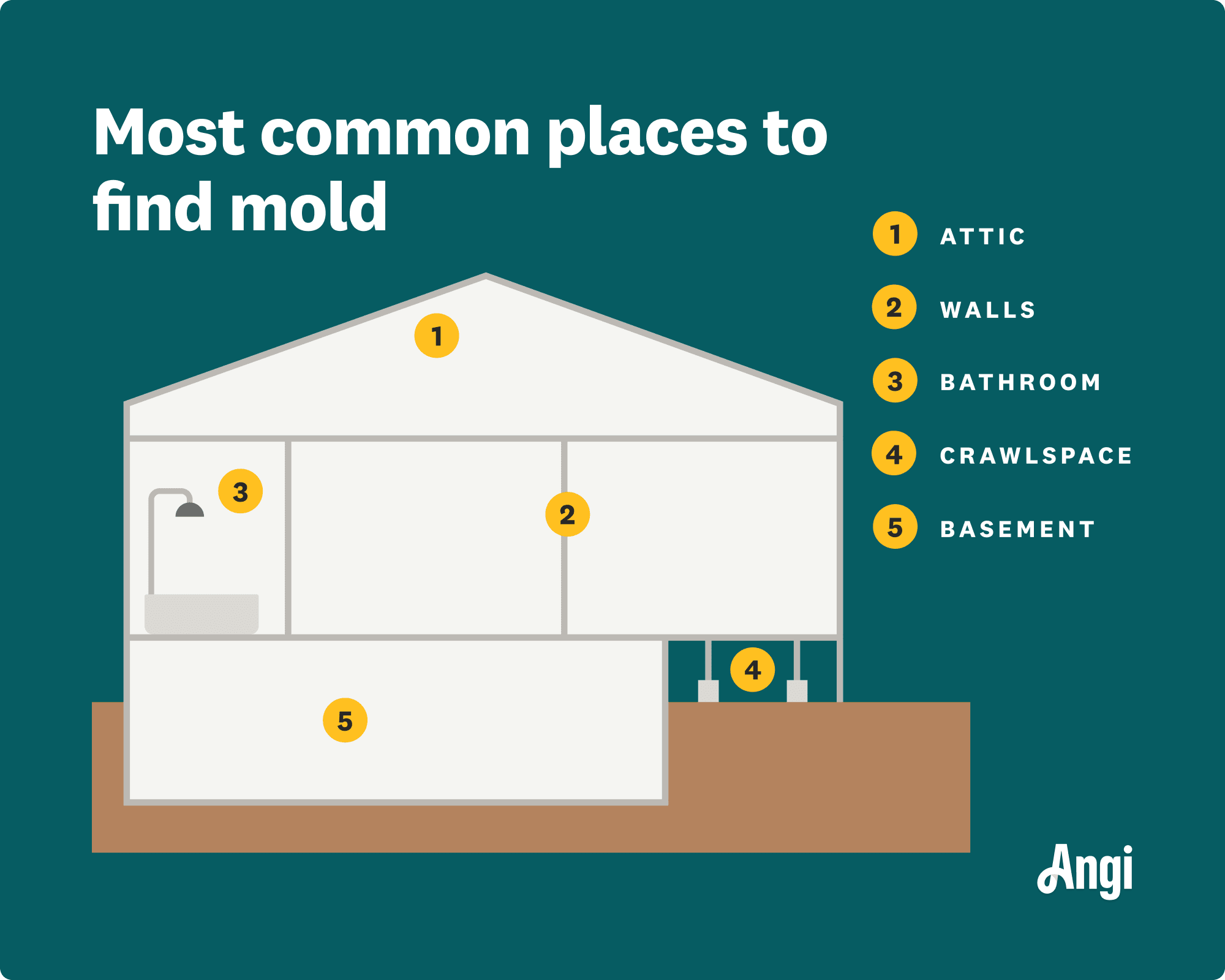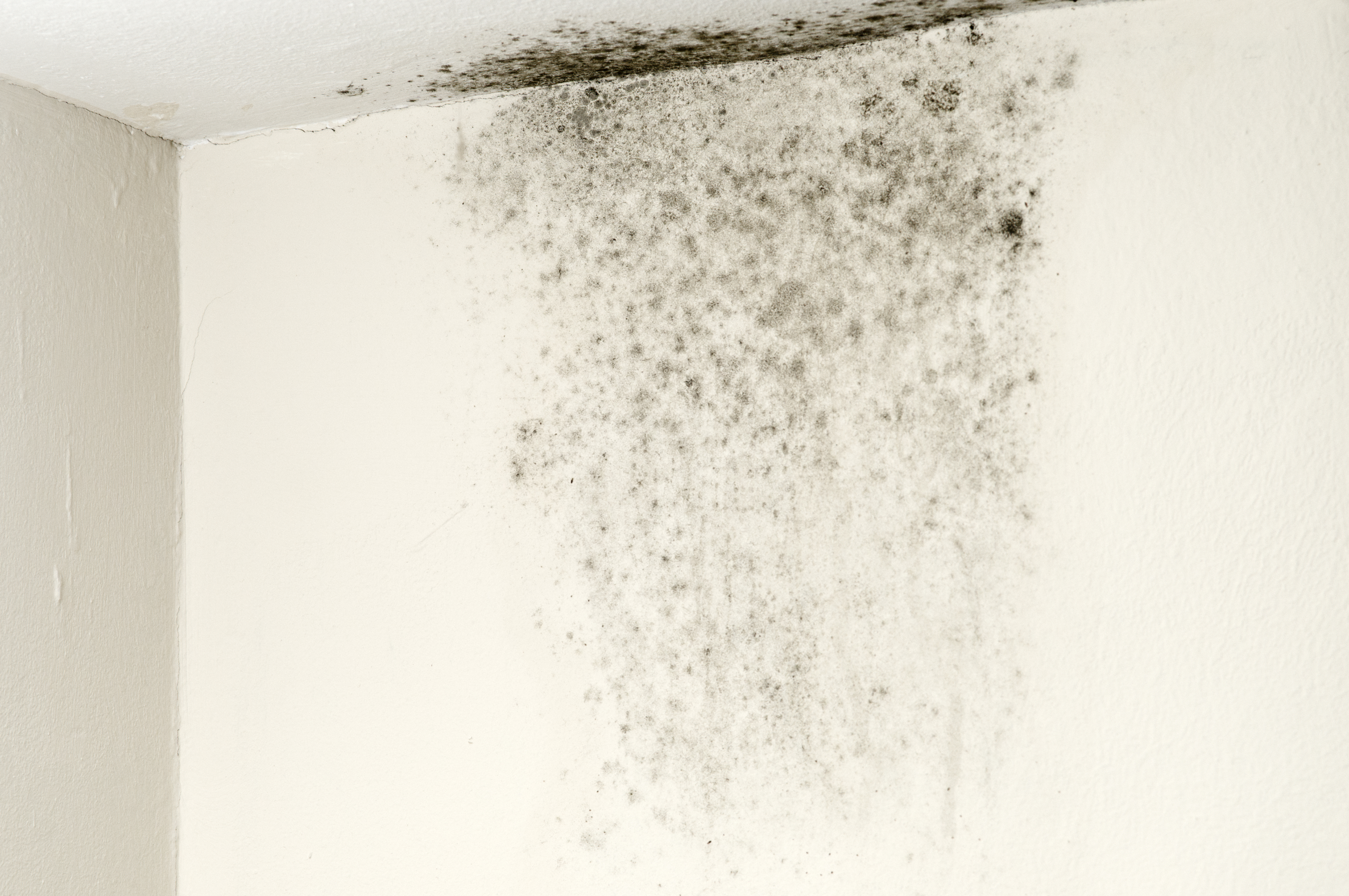
The cost of a mold inspection might seem high, but it’s one of the best investments you can make for your health and home. Read on to learn cost-saving tips.
Mold testing and remediation costs depend on your project and location. Check with a local pro for your specific job.
Chicago’s humid summers, icy winters, and flat roofs make mold hard to avoid.
Costs climb when mold hides in HVAC systems, drywall, or old brick walls.
Black mold removal runs higher because of the protective equipment needed.
Repairs to drywall, floors, or roofs add more expense but prevent mold from returning.
Chicago is known for its deep-dish pizza, Lake Michigan breezes, and moldy basements. The Windy City’s humid summers and snowy winters create the perfect moisture sandwich, trapping dampness inside walls and crawl spaces. Pair that with historic bungalows, century-old greystones, and the miles of basement apartments, and it’s no surprise mold sneaks in where it’s least welcome. On average, mold remediation in Chicago, IL, costs $1,599, with homeowners typically paying between $984 and $2,233.
Mold remediation costs in Chicago are informed by more than square footage and spores. The city’s housing stock plays a big role. Many older brick buildings hold onto moisture like a stubborn Cubs fan clutching last season’s ticket stubs.
Basement apartments are especially prone to mold thanks to lake-effect rains and the occasional sewer backup. Black mold is the villain most feared by locals because it thrives in damp drywall and can spread fast in tightly sealed buildings.
The Midwest’s climate swings also play a large role. Warm, sticky summers followed by icy winters cause condensation and leaks that create prime breeding grounds for mold. Even the style of your roof matters: Flat roofs—standard in Chicago—tend to pool water, which seeps into walls and ceilings. Together, these quirks make mold removal in the city a uniquely expensive game of “find the fungus.”

It costs more to remove mold from certain areas of your home than others. For instance, mold growth in hard-to-reach areas, like in your HVAC system or drywall, can require more time and materials to remove than mold in very accessible areas, driving up costs.
| Location | Average Remediation Cost in Chicago |
|---|---|
| Attic | $676–$2,704 |
| Basement | $338–$2,048 |
| Crawl space | $338–$1,352 |
| Wall | $676–$13,520 |
| HVAC systems | $2,028–$6,760 |
| Bathroom | $388–$676 |
| Whole house | $6,760–$20,280 |
Most mold removal professionals charge $7 to $17 per square foot. So, if you're removing mold from a 100-square-foot area, you can expect to pay around $667 to $1,690. But factors like where the growth is and the mold type can affect how much it costs to remove it.
Mold inspection costs between $203 and $727. Mold testing is key to determining whether you have the presence of mold in your home, plus the extent of the infestation. You’ll need to hire a mold inspector to test surface samples in your home before moving forward with remediation.
Regardless of how it affects remediation costs, you need to know which type of mold you have in your home for your safety. That said, if a mold test reveals the presence of black mold, your mold remediation pro will likely charge more to remove it based on the additional cost of protective equipment.
| Type of Mold | Description |
|---|---|
| Alternaria | A common mold found outside in spring and summer, it primarily attacks plants. |
| Aspergillus | White fuzz that turns black over time, but it can also be brown, yellow, and green. It can cause respiratory illness and requires immediate remediation. |
| Aureobasidium | Grows on painted surfaces and behind wallpaper. It’s often pink and causes allergies. |
| Chaetomium | Extremely toxic and can cause brain infections and various cancers. A white fuzz that turns to blue or green. Requires immediate professional removal. |
| Cladosporium | Commonly found in basements and HVAC systems. It can cause mild allergy symptoms. |
| Fusarium | One of the most toxic molds; requires professional removal once discovered. Often caused by water leaks, it is commonly found in walls and floors. |
| Penicillium | Blue-green and grows in areas of elevated moisture where water damage has occurred. It can be very dangerous. |
| Serpula lacrymans | Causes severe damage to wood and spreads fast. Unfortunately, this mold is usually found after it has spread widely. |
| Stachybotrys chartarum (black mold) | Extremely dangerous, not to mention fast-spreading. Requires immediate removal by a professional. |
| Trichoderma | Grows rapidly in wood, plants, and soil. Commonly found in HVAC systems and not as widely discovered as others in this list. |
| Ulocladium | A dark-colored mold found near windows and in kitchens and basements. Looks like black mold, but it isn’t as toxic to humans. Nevertheless, it still requires removal. |
If left untreated, mold can damage your drywall, carpeting, and flooring. Replacing or repairing your walls or floors will add costs to the removal.
Here are some cost estimates for different types of mold damage repairs in Chicago, IL:
| Repair Type | Average Cost in Chicago |
|---|---|
| Drywall | $676.00–$1,960 |
| Carpet | $523.90–$1,758 |
| Flooring | $135.20–$372 |
City costs stack up from everyday economics, tax regulations, and the mix of licenses, permits, and pros needed to keep spores from staging a comeback. Knowing these factors will help you budget with fewer surprises.
Life in Chicago costs 16% more than the national average, which nudges up hourly labor, materials, shop overhead, and even truck rolls. However, the good news is that mold removal services are cheaper than the national average by more than 32%.
Chicago’s combined sales tax rate is 10.25%. Mold inspections and testing are non-taxable services in Illinois, so visual checks, sampling, and written estimates are exempt.
Remediation is taxable when classified as a repair that services real property without replacing affected components. But if the work removes and replaces damaged materials in a way that restores the property as a capital improvement, that service is not subject to sales tax.
Pros scope the problem with moisture readings, air or surface samples, and photos. In Chicago’s tight basements and older brick homes, inspectors look hard at drywall near exterior walls, flat-roof leak paths, and below-grade rooms where lake-effect moisture likes to linger.
Certified technicians, respirators, negative-air machines, and liability coverage all add to the invoice. Illinois training and certifications help keep workers safe and compliant, and those credentials show up in the rate you pay.
Homeowners in Chicago sometimes tip crews for solid work. Think $20 to $50 per worker for a standard job, more for large multi-day projects. Add-ons can include clearance testing, upgraded vapor barriers, or extra dehumidification time if the space is slow to dry.
Big mold jobs often call for backup. While each situation adds cost, the work helps keep mold from staging a comeback worthy of a Second City improv skit.
If mold chews through drywall, subfloor, or framing, you may need a general contractor and, in some cases, permits for tear-out and rebuild. Older greystones and flat-roof two-flats often need extra drywall, insulation, or roof detail fixes before the space can be buttoned up.
Crawl space encapsulation costs $5,000 or more
Simple roof repairs start at $400
Foundation repair costs average $5,170
A healthier, fresher home is often the first noticeable change after mold remediation. That musty smell that used to cling to the basement or seep from the walls is gone, replaced with clean air and a fresh feeling that goes deeper than appearance. For many homeowners, the health benefits of reducing allergens and hidden spores are simply priceless in terms of ROI.
On top of that, the upgrades that often come with remediation, like better ventilation and sealed foundations, mean lower heating and cooling costs. When it’s time to sell, buyers will see a property that looks, feels, and functions like a healthy place to live, which can tip the scales toward stronger offers in Chicago’s crowded market.
Home is the most important place on earth, which is why Angi has helped more than 150 million homeowners transform their houses into homes they adore. To help homeowners with their next project, Angi provides readers with the most accurate cost data and upholds strict editorial standards. We survey real Angi customers about their project costs to develop the pricing data you see, so you can make the best decisions for you and your home. We pair this data with research from reputable sources, including the U.S. Bureau of Labor Statistics, academic journals, market studies, and interviews with industry experts—all to ensure our prices reflect real-world projects.
Want to help us improve our cost data? Send us a recent project quote to [email protected]. Quotes and personal information will not be shared publicly.
From average costs to expert advice, get all the answers you need to get your job done.

The cost of a mold inspection might seem high, but it’s one of the best investments you can make for your health and home. Read on to learn cost-saving tips.

Worried about mold in your central air conditioner? Learn how much it’ll cost to hire a pro vs. DIY this issue, and how to clean and disinfect your AC unit.

Learn how to tell black mold from black mildew by their look, location, and texture so you can clean it up yourself or know when to call in a pro.

There's an excellent reason why you should avoid going with the same company for mold testing and mold remediation. Learn why different companies should handle these tasks.

Who pays for mold remediation? Your homeowners’ or property insurance may help you pay some of the cost of removing mold, but it depends on the situation.

Learning how to remove mold from wood furniture is a worthwhile DIY project because you can save your expensive wood pieces. Learn more about safely removing mold from wood furniture.